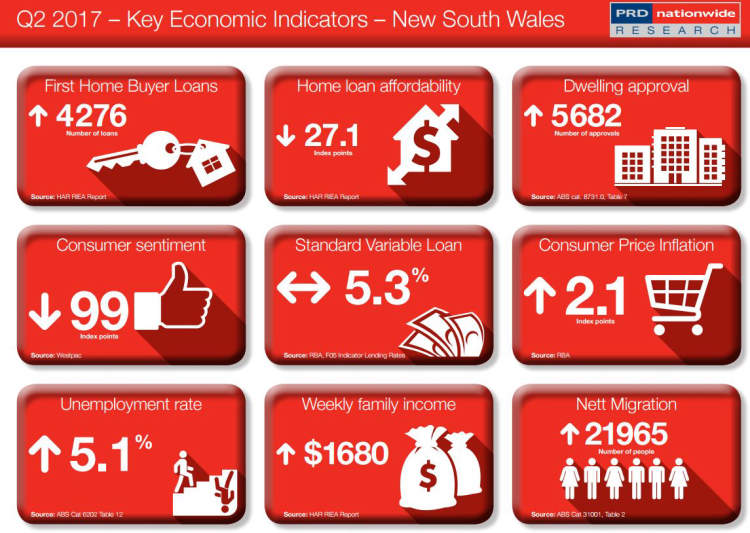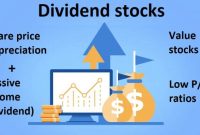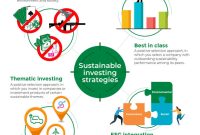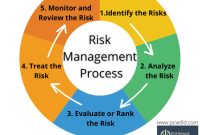Making sound financial decisions requires a basic understanding of economic indicators. These indicators provide insight into the state of the economy, and are used by investors, policymakers, and analysts alike to identify trends in the global financial markets. By understanding economic indicators, you can make smarter decisions about investing, borrowing, and budgeting.
Economic indicators can come from both government sources and private research firms. Some of the most widely used indicators are unemployment rate, interest rates, consumer sentiment, and commodity prices. Each of these indicators can tell you something about the overall health of the economy and can help you make more informed decisions about the present and future of your financial situation.
What are Economic Indicators?
Economic indicators are data points that measure the performance of the economy and help to predict economic trends. They provide investors, economists, and policy makers with a comprehensive overview of the economy and its current state. Economic indicators are used by businesses to make decisions, and investors to make informed investments in the stock market or other financial markets.
Several categories of economic indicators exist, including production, employment, money supply, and consumption. Production indicators measure the level of output of goods and services in the economy. Employment indicators measure the number of people employed and the strength of the job market. Money supply indicators measure the amount of money in circulation and its availability. And consumption indicators measure the demand for goods and services.
Investors and policy makers alike use economic indicators to analyze and anticipate economic trends and make smart financial decisions. Some of the most important economic indicators to watch are the Consumer Price Index, Producer Price Index, Gross Domestic Product, Unemployment Rate, Industrial Production, and Interest Rates.
Consumer Price Index
The Consumer Price Index (CPI) is a measure of the average change in prices paid by consumers for retail goods and services. The CPI is used to measure changes in prices of consumer goods and services over time, which helps to gauge inflation.
Producer Price Index
The Producer Price Index (PPI) measures the prices of goods purchased by businesses from domestic producers, and is used to measure changes in the price of production inputs such as labor, raw materials, or energy.
Gross Domestic Product
Gross Domestic Product (GDP) measures the value of all goods and services produced within a certain period. It can be used to gauge the economic performance of a country or region and is a key economic indicator.
Unemployment Rate
The unemployment rate measures the percentage of people who are looking for work but cannot find suitable employment. This economic indicator is important for understanding the overall health of the job market.
Industrial Production
Industrial Production measures the output of manufacturing, mining, and utilities in the economy. It is an important indicator of economic growth and a reflection of consumer and business demand.
Interest Rates
Interest Rates measure the cost of borrowing money over a certain period of time. Changes in interest rates affect the cost of borrowing and in turn affect borrowing and spending.
Tracking and understanding economic indicators is a critical task for investors and policy makers. By understanding and analyzing economic indicators, investors and policy makers can make informed decisions that can help them make smart financial decisions.
How Economic Indicators Influence Financial Decisions?
Economic indicators are important data points which can help inform a wide range of financial decisions. When making decisions about investing, lending, or managing a business, understanding the current climate of the economy can help people make better decisions. This article will discuss some of the most commonly used economic indicators and how those indicators can influence financial decisions.
Types of Economic Indicators
There are many different types of economic indicators available to measure the current financial environment. Some of the most common economic indicators include Gross Domestic Product (GDP), unemployment rate, inflation, and consumer confidence index. Each of these indicators can give valuable insight into the overall health of the economy and can provide an indication of how well businesses and individuals are doing financially.
Impact on Financial Decisions
Understanding economic indicators can be extremely helpful when making financial decisions. For example, if the unemployment rate is high, it may be a sign that businesses are not doing well and that potential investments are unlikely to yield a large return. By understanding the current economic indicators, an investor can make more informed decisions about where to invest their money.
In addition, understanding economic indicators can help people better manage their finances. For example, if the consumer confidence index is low, it may be an indication that prices of goods and services are increasing. Knowing this, individuals can budget better and take steps to save money in order to prepare for any potential economic downturns.
Conclusion
Overall, economic indicators can be extremely useful in helping people make informed financial decisions. By understanding the various economic indicators, people can gain an understanding of the current economic climate and make more informed decisions about investments, financing, and budgeting.
Tools to Understand Economic Indicators
Economic indicators help investors and governments understand the health of a country or region’s economy. Knowing how to interpret these indicators can help investors make smart financial decisions. There are many tools to help learn and understand trending economic indicators. Here are some of the most important tools to consider.
Economic Data and News
Accessing market and economic data and news is one of the most basic tools for understanding economic indicators. Investors can utilize databases of up-to-date information on economic data and analysis to understand current landscapes and forecast future trends. Keeping up with the latest news can alert investors to any sudden changes that might impact their investments, such as new government policy changes.
Analytics Software
Analytics software can be used to track economic indicators and detect patterns. Many tools are designed to help users quickly and easily obtain data, such as consumer confidence, stock prices, and employment trends. Investors can also use analytics software to set up alerts and notifications when certain indicators reach certain levels. This can help investors identify the right times to make investments or divestments.
Economic Forecasts
Investors also utilize economic forecasts to understand and anticipate economic trends. Forecasts take into account data from the past and current economic climate to make predictions about the future of certain industries or regions. While there is no guarantee that forecasts will prove accurate, they can provide investors with valuable data and insight to help inform financial decisions.
Real-Time Trading Charts
Real-time trading charts are also an important tool when it comes to understanding economic indicators. The charts allow investors to keep an eye on stock prices, commodity prices, and other forms of trading data in real time. This allows investors to monitor the movements of the markets and make split-second decisions on buy, sell, or hold orders.
Research Reports
Research reports can provide investors with comprehensive analysis of data and insights into the economy. Expert economists often compile reports using a range of data sources. By relying on the research reports, investors can gain a better understanding of economic trends and how they may impact their investments.
Online Economic Calculator
An online economic calculator is a useful tool for investors to compare multiple economic indicators and assess the impacts that they may have on their investment decisions. These calculators usually allow users to plug in data and view the results in real time. The results can provide investors with an estimate of the potential returns or losses based on their investment choices.
Conclusion
In order to make informed financial decisions, it is important to develop an understanding of basic economic indicators, which tell us about the health of a given economy. Understanding how each indicator impacts economic performance and financial markets can help you make more informed decisions. By using current economic indicators, investors and entrepreneurs can accurately assess the risk and potential opportunity in certain investments or business ventures.
Ultimately, economic indicators are just one piece of the puzzle when it comes to making financial decisions. Markets are volatile and impacted by numerous factors both economic and political. By doing your research and staying informed of the economic landscape, you can become a more savvy investor and be better equipped to make sound financial decisions.




